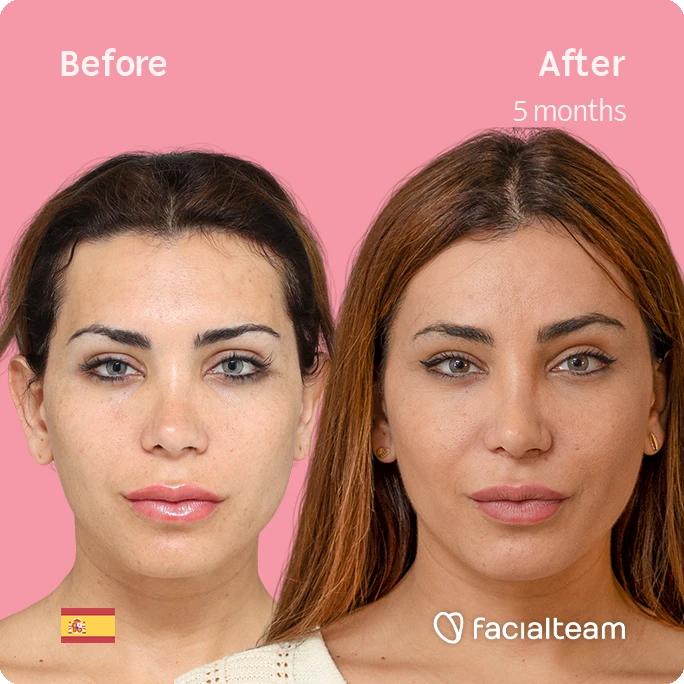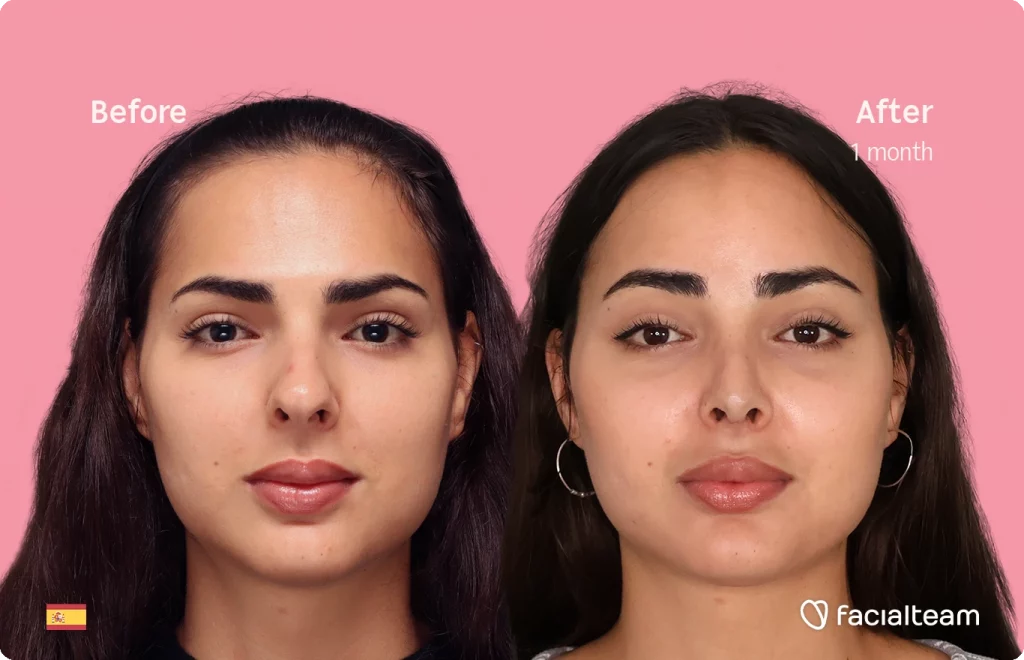Brow Bone Reduction Surgery: How to Make My Forehead More Feminine

Also known as Forehead Contouring or Forehead Feminization, this procedure helps reduce the prominence of the brow bone resulting from the effects of testosterone during puberty, with the goal of sculpting a softer and more stereotypically feminine appearance. Many trans women consider this procedure key to aligning their physical appearance with their gender identity, not only enhancing their natural beauty but also providing them with emotional well-being.
Why is my Brow Bone so big?
It’s important to understand that the size of the brow bone, or supraorbital ridge, can vary between genders due to the effect of hormones during puberty. Generally, male skulls tend to have a more pronounced brow ridge, while female skulls have a smoother, flatter forehead. It’s worth noting that this distinction is just one of many facial features that contribute to gender perception.
Jennifer

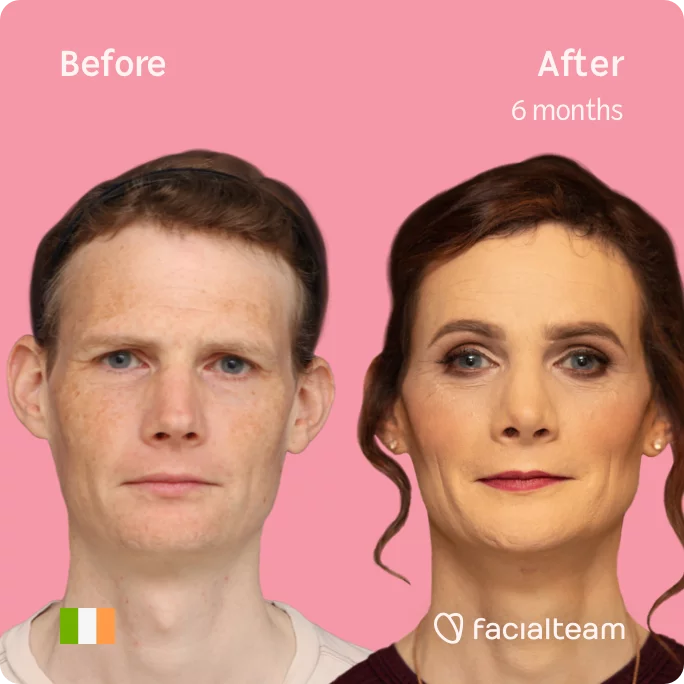
How is a Male Forehead different from a Female Forehead?
The differences between a masculine forehead and a feminine forehead are sometimes subtle yet distinctive, shaped by both genetic and hormonal factors. These can be seen in several key areas.
One of the most noticeable distinctions is as mentioned before, the brow ridge or supraorbital ridge. In stereotypically “masculine” foreheads, this area tends to be more pronounced, creating a more angular and prominent brow line. In contrast, stereotypically feminine foreheads usually have a less pronounced brow ridge, resulting in a smoother and more gently curved brow line.
The curve of the forehead also varies between these stereotypes. Masculine foreheads often have a more vertical slope or are more angular, giving a more tough appearance. Feminine foreheads, on the other hand, tend to be more rounded or gently sloping, contributing to a softer and more delicate look.
Aline
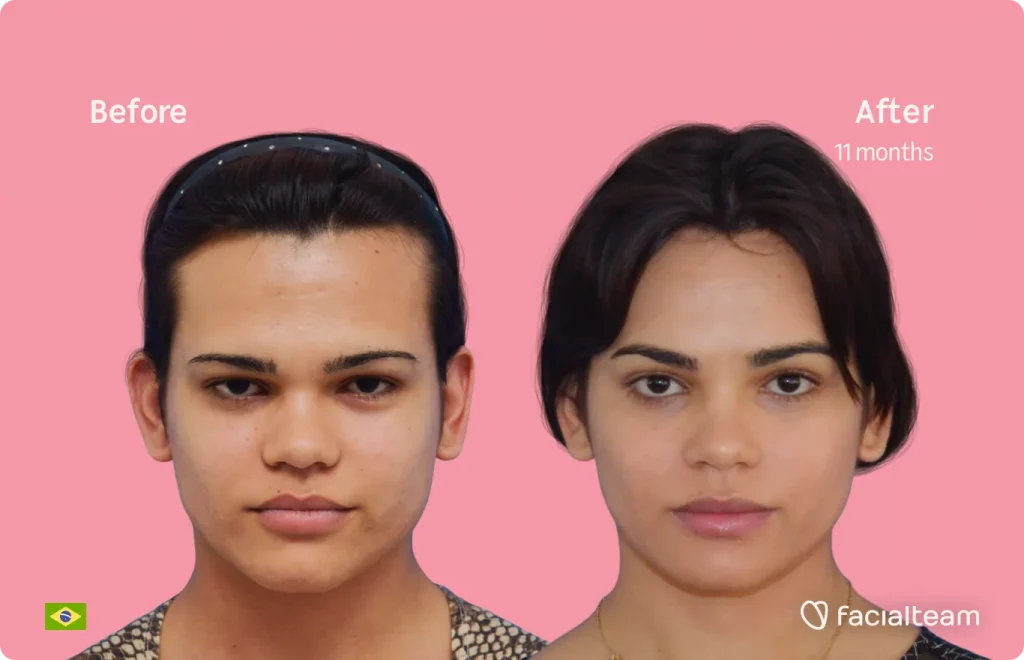
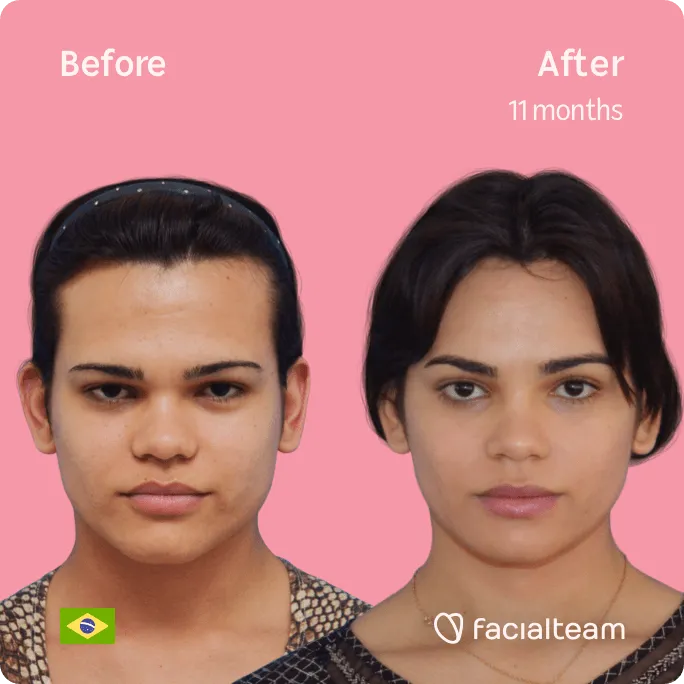
The hairline is another area where differences can be noticed. Men’s hairlines often recede more, leading to a higher forehead. The shape of a masculine hairline can be more angular or M-shaped. In contrast, women’s hairlines are stereotypically lower and more rounded, maintaining a smooth curve without significant recession.
In terms of overall shape, “masculine” foreheads are typically broader and higher, making a more robust and pronounced facial structure in men. Conversely, “feminine” foreheads tend to be smaller and vertically shorter, which complements the generally softer features of a female face.
Bone structure also plays a crucial role in distinguishing masculine and feminine foreheads. Men usually have thicker and denser frontal bones, which provide greater definition to areas like the glabella—the smooth area between the eyebrows. This results in a more prominent and defined look. Women, however, have thinner and less dense frontal bones, and their glabella is less pronounced, leading to a more continuous and smooth forehead surface.
June
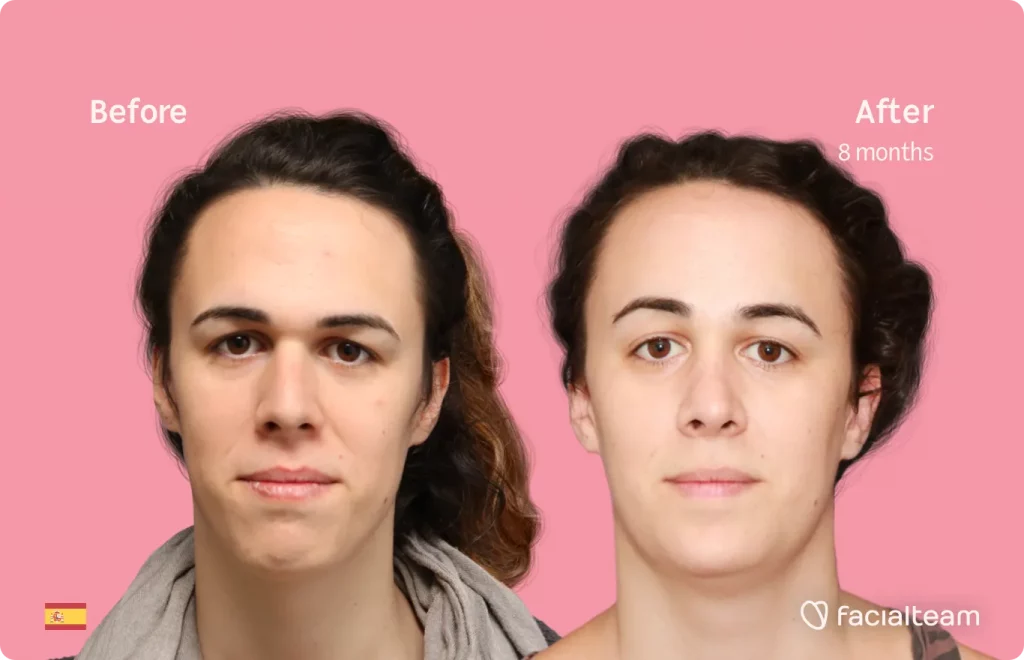
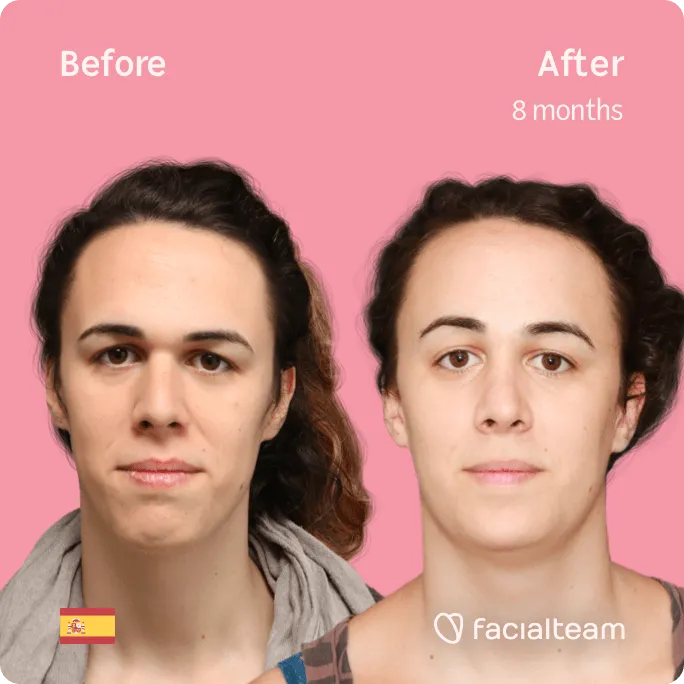
While these traits provide a general guideline, it’s essential to recognize that individual variations exist, and these features alone do not define gender. The distinctions in foreheads are part of a broader spectrum of physical diversity observed in humans.
How can I Feminize my Forehead?
Forehead Feminization Surgery, also called Forehead Reduction Surgery or Forehead Recontouring, is the procedure that reshapes the forehead to make it look more feminine. This delicate procedure involves techniques like bone reshaping and contouring to create a softer, more feminine appearance.
Our unique FOREContour® technique is designed for people of all gender identities who want to transform their forehead and create a more harmonious look.
The process starts with a thorough inspection with a 3D CT Scan to understand your unique facial structure. Our experts then create a personalized surgical plan, sometimes even having your skull 3D printed to work on it prior to surgery, using 3D-printed guides to guarantee precision during the surgery. The initial steps include making an incision, removing a small strip of scalp, and carefully accessing the forehead area.
Then, we start the sculpting and remodeling process with great care and attention to detail. With the expertise of two skilled surgeons and a caring nurse, we begin shaping your forehead to a version of yourself prior to puberty. Always considering your unique features, your overall look, and, most importantly, your personal goals.
For those who have requested a hairline feminization, we take hair follicles from the removed scalp strip and strategically place them to create a natural and fuller hairline. This ensures that your new forehead and hairline look cohesive and beautiful.
You’ll likely notice the changes almost immediately after surgery, but it’s important to remember that the final results will continue to improve over the next year. Most of our patients find that their new forehead looks natural and blends seamlessly with the rest of their face.
Now, recovery is a gradual process. You’ll spend a night or two in the hospital to ensure everything is going well. Swelling and bruising will go down in a few weeks, our team will always be there to support you every step of the way. We offer follow-up consultations to make sure you’re healing well and feeling good about your results.
Facialteam Research & Education in Forehead Feminization
Facialteam’s Research & Education department was born from a vision to enhance trans healthcare for people of all gender identities, at a time when Facial Feminization Surgery was often misconceived and underestimated.
For thirty years, the field saw minimal progress. In response, our team, working alongside international gender surgeons, introduced the term “Facial Gender Confirmation Surgery” in two significant 2017 publications. This was a pivotal step in promoting a more inclusive understanding of gender surgeries within the medical community.
Since then, Facial Gender Surgery has seen fast advancements. Alongside these developments, our team has continually expanded its expertise and deepened its commitment to research and education, striving to provide the best possible care for our patients.
Our innovative FOREContour® method, is the result of years of dedicated research and hands-on clinical experience. Building on the techniques we first developed in 2010, we’ve integrated new technologies to tailor each procedure to the unique anatomy of every individual.
Being supported by numerous scientific articles and reflecting our unwavering commitment to advancing the field of upper facial feminization surgery since 2008. These publications document our journey and dedication to providing the best possible care for our patients.
What are the risks of having Forehead Feminization Surgery?
At Facialteam, we are proud to report that our technique FOREContour® has a very low complication rate of less than 1%, with our average revision rate for Forehead Feminization Surgery at just 0.84%.
While any surgical procedure under general anesthesia carries potential risks, the most common minor complications include swelling and bleeding. Some patients may also experience temporary numbness that gradually improves over time.
In case some major complications occur, these are typically identified within days after surgery. To provide peace of mind, we offer comprehensive medical insurance coverage, ensuring that any unforeseen medical needs related to the forehead surgery are fully addressed.
But don’t worry, our Reintervention rate for Forehead Reconstruction by Coronal Approach is just 1.37%, reflecting the expertise and care offered at Facialteam.
What can be achieved with a Forehead Feminization Surgery?
You will see results almost immediately after surgery. However, you have to keep in mind that soft tissues will continue to improve over the course of the following year.
The goal of this technique is to create a more feminine and harmonious appearance in the upper third of the face, achieve a smooth forehead-to-nose transition, and give a more open and expressive eye area.
Sometimes, combining Blepharoplasty with our FOREContour® procedure is highly recommended, enhancing overall facial harmony.
How do I know if I need Forehead Feminization Surgery?
There might be cases where you don’t think you need Forehead Feminization because your brow bone isn’t very prominent. Perhaps you feel another procedure should take priority, or maybe you’re focusing too much on just one feature of your face.
I’ve met several pre-op patients whom I initially thought might not need this procedure. However, after meeting them post-op, I realized that subtle changes are often crucial for gender identificators.
We often overlook the overall harmony of our face when evaluating which features we think need to change; we simply focus on the feature that bothers us the most. This is where a Facial Feminization Expert can assist.
The harmonization of key features on your appearance will always have more impact than modifying a single feature.
I’m still scared of having Forehead Feminization Surgery: What should I do?
Forehead Feminization Surgery offers a life-changing experience for trans women, providing both a confidence boost and a sense of inner peace. By understanding the procedure, knowing the potential risks, and comprehending the recovery process, you can make an informed decision.
So, if you are hesitating on whether to have the surgery or not because of fears or concerns, simply don’t stress out – When in good hands, it’s a completely safe experience.
Nowadays, an expert in the field will always provide you with, not only spectacular results but a warm and heartfelt experience that you will never forget.
Lots of love, Vicky xx
Let us answer your questions
If you have read this article but still need some extra information regarding our FOREContour® technique or brow bone feminization surgery, book a free consultation now.
Our team of experts is ready to address any questions you may have regarding these.








